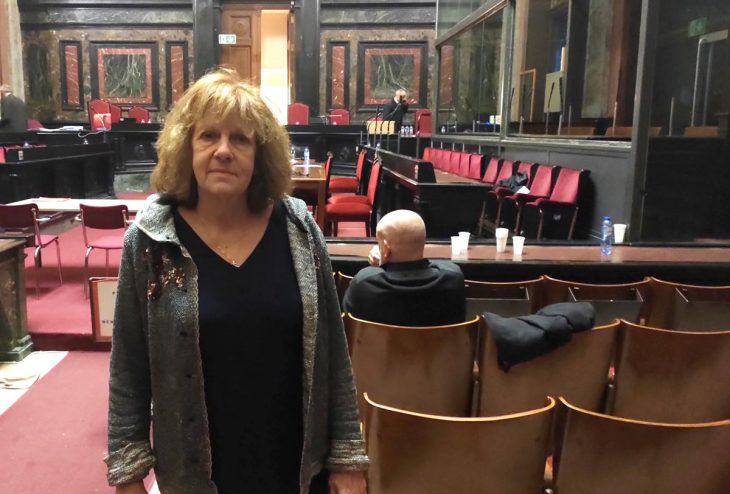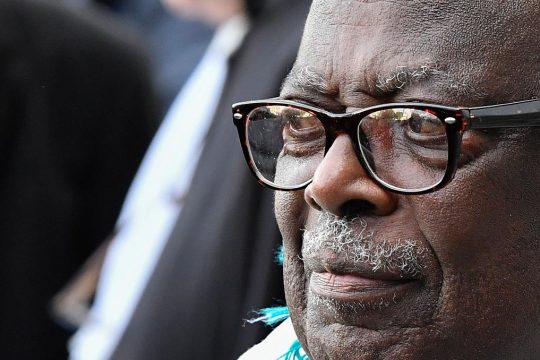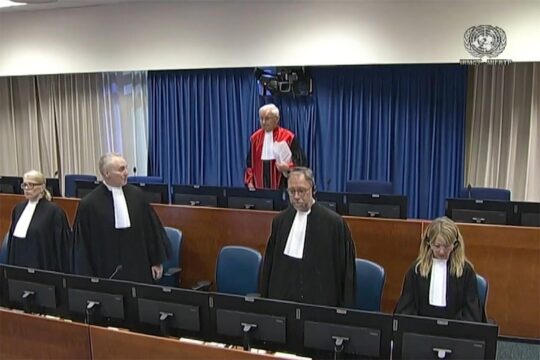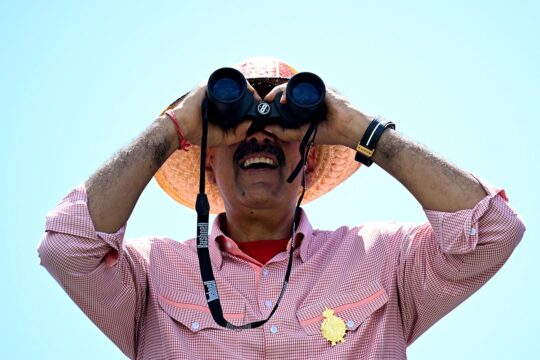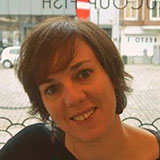The large, plush coutroom with its purple tones was packed as Régine Bategure, now 41 years old, began her testimony. In April 1994, Régine and her younger brother Emmanuel Nkaka lived with their uncle Isaiah Bucyana, his wife Claire Beckers and their cousin Katia, the couple's youngest daughter. The family was living in a house in the Nyamirambo district of Kigali, like other families of Tutsi origin.
On 7 April 1994, the day after the late president Juvenal Habyarimana's plane was shot down, massacres began in the Rwandan capital. On the 8th, the family received a visit from Interahamwe militiamen. They were looking for Isaiah, they said. "They came and ransacked the house. They took things, asked for money. And they said, ‘When we come back, we'll kill you’. Claire then tried to contact UNAMIR (United Nations Assistance Mission for Rwanda). They told her to come and join them if we could," said Régine in a small voice, no doubt impressed by the solemnity of the courtroom.
"They looted the house, smashed everything, stole money, watches, and they raped Katia in front of Claire," recounted Martine Beckers, who told the court about her last phone calls with her sister, Claire Beckers. "They were horrible stories," she exclaimed with a nervous laugh. Martine Beckers, a civil party in the trial, contributed to the investigation that led to this trial of Fabien Neretse. "When I returned from Rwanda in September 1994, I filed a complaint. Then whenever I had information, I would report it to the police," she says.
"Someone from Neretse's house was there!"
On April 9, the Bucyana, Sisi and Gakwaya families decided to form a convoy to take refuge in the UNAMIR camp. But preparations were interrupted by the arrival of a vehicle carrying soldiers and Interahamwe. "I don't know how many of them there were, but a lot. There was also a boy with them named Emmanuel. He lived with our neighbour [Fabien Neretse]," Régine continued.
There were many questions from the court. How did she know that this man's name was Emmanuel? "That's the name I heard," she replied. And how did she know he was from the defendant's house? "I had seen him enter and leave the house. I don't know if he was a houseboy or not," she added. "I don't know who exactly warned the soldiers and the Interahamwe, but I guess it was Neretse since someone from Neretse's house was with them." Could they also have been tipped off by Major Evariste Nyampame, whose garden overlooked theirs? "Maybe it's possible!" she replied, adding that the major's children sometimes climbed on the wall to watch their house. "But someone from Neretse's house was there! He came with the military!" she insisted.
"They took us out of the car, put everything on the ground," she said. "They made us sit in the street in front of Sisi's gate. They hit us with iron rods, insulted us. They knew that Claire was Belgian and that my cousin [son of Claire Beckers and Isaiah Bucyana] was an RPF soldier. They were telling Claire to call the RPF on the radio so they could come and rescue us. They were mocking us.
The attackers then took the victims behind the house. "They made us sit in line. I was in the second line,” said Régine, who was 16 years old at the time. "There were a lot of us, about ten. We asked them to spare us. The soldier with a gun said no. He started shooting at Claire. She fell backwards, and I lay down on the ground as they started shooting everyone. When they had finished, they left. I waited until I couldn't see anything and climbed out from the corpses. I went to our house and that's when I saw that Emmanuel was following me."
Neretse points to the Sisi house
Gerard Gakwaya, who lost his wife Julienne Mukakayumba and their eight-month-old daughter Inès Gakwaya in the shooting, testified in turn. "On April 9, Claire Beckers had just called UNAMIR, which agreed to take nine people. My wife, who was carrying an eight-month-old baby on her back, then left following Isaiah [Bucyana]," he told the court. "My wife and child entered the Sisi house. They closed it up. Hardly two minutes later, a red Toyota pickup truck arrived carrying three people, including soldiers. These soldiers stopped at Neretse's house. He went out and showed the soldiers the Sisis’ house," said the 70-year-old man.
Régine Bategure, Emmanuel Nkaka, Gérard Gakwaya and another resident of the Nyamirambo district in turn told the court that Neretse was known to be close to the Interahamwe and to organize meetings of the MRND, the ruling party, in his country. "I only knew Neretse by sight. I didn't know much about him. I saw him when there were demonstrations by the Interahamwe. He used to walk with them," said Bategure.
Gakwaya recounted an episode on April 10, when he buried the victims’ bodies with the residents of Nyamirambo. Neretse was present, he told the court. "Yes, yes, it was Neretse, I saw him. He was there too. Someone said that the Sisi house should be destroyed, but Neretse said no, that it could be turned into an area office," said the witness, when asked why he told investigators Neretse was happy that the victims were dead.
The trial continues with the hearing of witnesses, this time relating to the crimes for which Neretse is accused in Mataba, his hometown in northwestern Rwanda.


